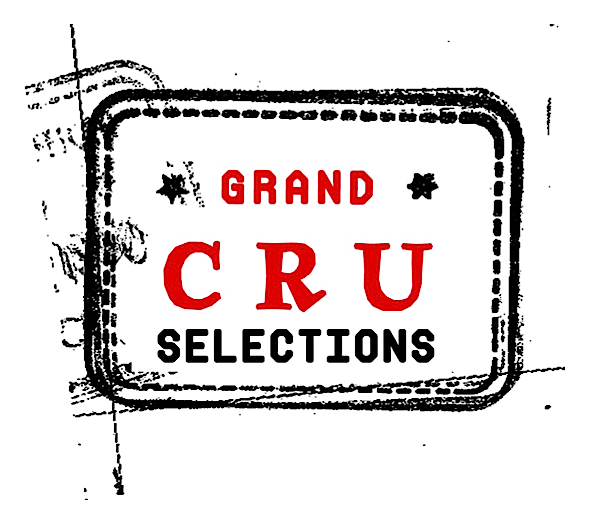Borgo del Tiglio Current Releases
While never following any strict protocols, Nicola Manferrari's style as a winemaker can be summarized by several key points. The first starts at harvest, with a strict selection and sorting regimen. Nicola does not want any botrytized grapes even if that means having to leave a large amount of fruit in the vineyard. All of his white varieties are crushed before they fall directly into his press. The process is basic, and there is a very short transport solely by gravity, which is important to him in order to avoid damaging the grapes. The crushed grapes are processed in a pneumatic press, using principles he learned from studying Champagne production - ever increasing the pressure gradually. This way he produces less solids and extracts little potassium, something very important to him in order to ensure a good level of minerality in the wine.
The alcoholic fermentation begins in stainless steel tanks and as soon as it starts, the must is transferred into oak barrels, where it will stay throughout the fermentation process. The white wines remain in barrel for 10 months and are bottled before the next harvest. Nicola sources all of his barrels from France and he uses exclusively 250 liter barrels. The percentage of new barrels on the white wines is small but does vary according to the wine.
Collio
The Collio is made from Tocai (Friulano), Sauvignon, and Riesling Renano. The blend was born in 1989, following a series of experimental blends when trying to create the first vintage of Studio di Bianco.
The Collio has become a collection of the various varieties Nicola works with and a snapshot of a particular vintage. The three varieties are particularly suitable to be vinifed together as they are complementary in many respects: the high acid quality of the Sauvignon and the Riesling balances the power and body of Tocai.
Chardonnay / Chardonnay Selezione
Nicola’s Chardonnay comes from the hills of Ca’ delle Vallade, located between Brazzano and Ruttars. This area’s soil is locally called carantan but is predominantly reddish marl. The vineyard faces southeast and has a colder climate compared to the local average because it is in a valley constantly influenced by the Bora, a cold wind that blows from the northeast. The vines often used exclusively for the Selezione are located at a higher altitude at the top of the hill but with the same type of soil. The parcels’ vine age are now on average older than 40 years and are at a higher planting density than what you usually see in the area - between 3,500 and 7,300 vines per hectare.
If the vintage allows, the Chardonnay Selezione comes exclusively from the higher altitude parcel. If not, the Selezione is made from a barrel selection of the best barrels of Chardonnay of the year. Anything not selected gets bottled as the Chardonnay. Both Chardonnays are aged in approximately 30% new oak but there is almost no new wood in the rest of the wines.
Friulano
The parcels that go into the Friulano come from vineyards planted in the grey-brown marl soils of Brazzano and Ruttars. The parcels are on average sixty years old and have a genetic diversity of Friulano that is uncommon in the area. This is a result of a careful cultivation of a local plant material now virtually extinct.
Ronco della Chiesa
Ronco della Chiesa is a single vineyard of almost seventy year old Tocai planted behind the winery.
The soil in Ronco della Chiesa is predominantly brown marl and its climate is mild since the vineyard is sheltered from the cold winds blowing from northeast. The vineyard was cleared by hand and planted in the late 1950s, all using local selection massale selection. The subsoil of marl and sandstones guarantees a supply of water to the vines even during the driest periods of the year and the steep terracing of the slope is perfect for ripening. It’s no surprise that Nicola is so proud of this parcel, it checks all the right boxes.
Studio di Bianco
Studio di Bianco is a blend of Friulano/Sauvignon and Friulano/Riesling co-fermentations from the estate’s hillside vineyards in Ruttars, close to the Slovenian border. Generally the blend is 50% Friulano, 25% Sauvignon and 25% Riesling but it depends on the vintage.
The vineyard used for Studio di Bianco has several different exposures (East, South, and Southeast) and has a pale grey soil that comes from the fragmentation of calcareous marl. Most vines were already planted when the vineyard was purchased by Nicola 1989.
The grapes of each variety are harvested on the same day and are pressed together. After they finish fermenting the co-fermentations are blended in the cellar for aging in 250 liter barrels. Nicola’s thinking behind the cofermentations is that the three varieties are so complementary in many aspects. Typically, the Friulano and Sauvignon do not undergo malo, while the Friulano and Riesling do.
Milleuve Bianco
Milleuve Bianco is a blend of Tocai, Malvasia, Chardonnay, Sauvignon and Riesling Renano vineyards. It is both a declassification of barrels that Nicola chooses by tasting and a product of a selection of fruit from his parcels that he did not want to include in wines under the Borgo del Tiglio label.
Milleuve Rosso
Milleuve Rosso is blend of Montepulciano and Sangiovese, cultivated on a hill in the Piceno area of the Marche. Nicola for a time co-owned a fifty year vineyard in the area and produced two single varietal wines, a Sangiovese and a Montepulciano. Any fruit that was not included in either was blended and became Milleuve Rosso.
The grapes are de-stemmed and pressed in small tronconic wooden vats which can hold up to 12hectoliter. These are filled half-way and it is there, after a brief cold maceration, that alcoholic fermentation takes place. The wine is aged in 250 liter mostly neutral barrels.
